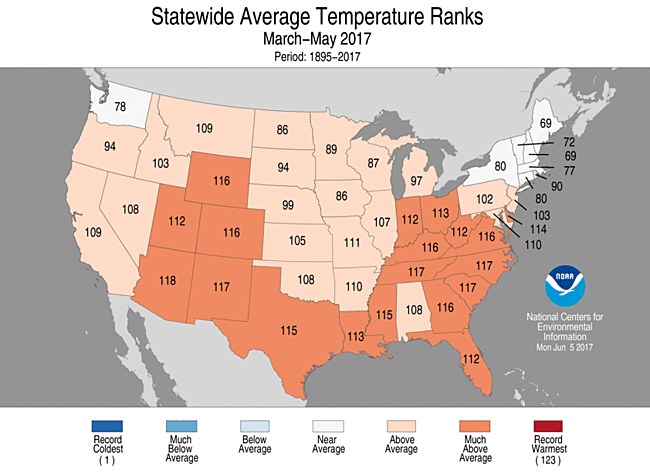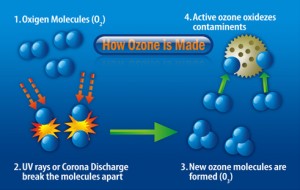
The good news is that here in Arizona no heat records have been broken this year. Yet. Moreover, the National Weather Service expects temperatures here to rise over the weekend to only 113 degrees on Monday, a full 2 degrees cooler than it was last year on that day. But it is still going to be a hot week, well over the 122-year average and only a fool would call that cool.
Tips to deal with the heat
Remember that light is heat and that cold air sinks and hot air rises, which, incidentally, appears to be not only a law of physics, but of politics as well.
Therefore:
In the morning:
- close windows and draw blinds and drapes.
- If you have venetian blinds, close them by angling them upwards.
- Set your thermostat to 78 degrees Fahrenheit when you are home and 85 degrees when you are away.
The infirm, elderly, and others who have trouble maintaining body temperature (such as diabetics), should set it to 72 to 75 degrees when home. - Check that ceiling fans run counterclockwise, so that cold air is drawn up.
- Turn off lights, electrical devices and electronics when not in use.
- Run a fan across a bowl of ice to cool down.
- Hang wet sheets across the windows to cool down a room.
At night:
- When the temperature drops, open windows and doors with screens to bring the inside temperature down.
- Use cotton nightwear instead of nylon or silk; the looser the better.
- Before retiring, put the bed sheets in the freezer for a few minutes
- Put a cold water bottle in your bed
- Sleep close to the floor, where the air is cooler
- Drink at least 8 ounces of water before going to sleep
Drink, drink, drink!
In high heat, thirst is not a reliable indicator of your need for water. Make sure to drink the recommended daily amount, which is about 100 fluid ounces for men and about 75 for women.
Liquids that contain caffeine, alcohol, or large amounts of sugar don’t count– these actually cause you to lose more body fluid. Also, avoid very cold drinks, because they can cause stomach cramps.
Slather it on!
One more tip not get mentioned in the broadcast: when you are out in the open, slather on the SPF30 – also when it is cloudy or breezy and you don’t feel the heat so much. Clouds and breezes do nothing to stop the UV-radiation that causes skin cancer.
Heat stroke
The warning signs of heat stroke are red, hot sweaty skin, cramps, lightheadedness or headaches, and fatigue.
If you find someone with these symptoms, call for an ambulance. Get the victim out of the heat. Loosen or remove clothing, wrap the person in wet towels or clothes, and apply ice packs around the neck, the groin and under the arms and knees (where the blood flow is greatest and closest to the surface). If the victim seems mentally impaired, which is common in this situation, do NOT try to make the person drink, cause they may choke on it.
And NEVER EVER EVER leave your child or your pet in the car, not even for a moment. Each year, 500 American kids and an untold number of pets die of heat stroke after being left in the car. If an establishment you are visiting does not allow pets; tie them up outside with a bowl of water, or just leave them at home.

Ozone
Another nasty consequence of excessive heat is the formation of ground-level ozone. Ozone is good when it is high up in the atmosphere, because it filters out UV radiation. But on the ground it is a different story.
The ozone molecule consists of 3 oxygen atoms, where regular oxygen molecules only have two. But the hot sun knocks single atoms out of the carbon-oxide compounds in exhaust fumes and also provides the energy that makes these loners stick to the other two.
As soon as the energy level drops, however, the third one gets booted out again and looks for something else to attach to. Whatever it attaches to is oxidized, meaning burnt. Ozone especially likes to burn mucus membranes in eyes, mouths, noses and lungs. It’s bad for the skin, too.
It stinks, you could say – and that is exactly what the word means in old Greek. In order to keep ozone off the ground, it is more than ever advisable to minimize driving by combining trips and car pooling and not let the engine idle for extended periods.
Air quality conditions and advisories for our area can be found under the ‘Environment’ tab at pima.gov.
Protecting your plants
Lastly, you can protect the plants in your garden from the heat with shading cloth or just a white bed sheet. Bedsheets are actually much more efficient at holding the temperature down, but they are not permeable like shading cloth, so the wind may take them unless you make some tears in them.
(Broadcast 4:38)
The Weekly Green airs on Monday 5:55 PM, Tuesday 4:55 AM, Wednesday 9:55 AM & 5:55 PM, Thursday 7:55 PM and Saturday 9:55 AM. First airing is usually at 10 am on Wednesday.
Please email inquiries, suggestions and comments to The[email protected] or post them on the Weekly Green Facebook page.

